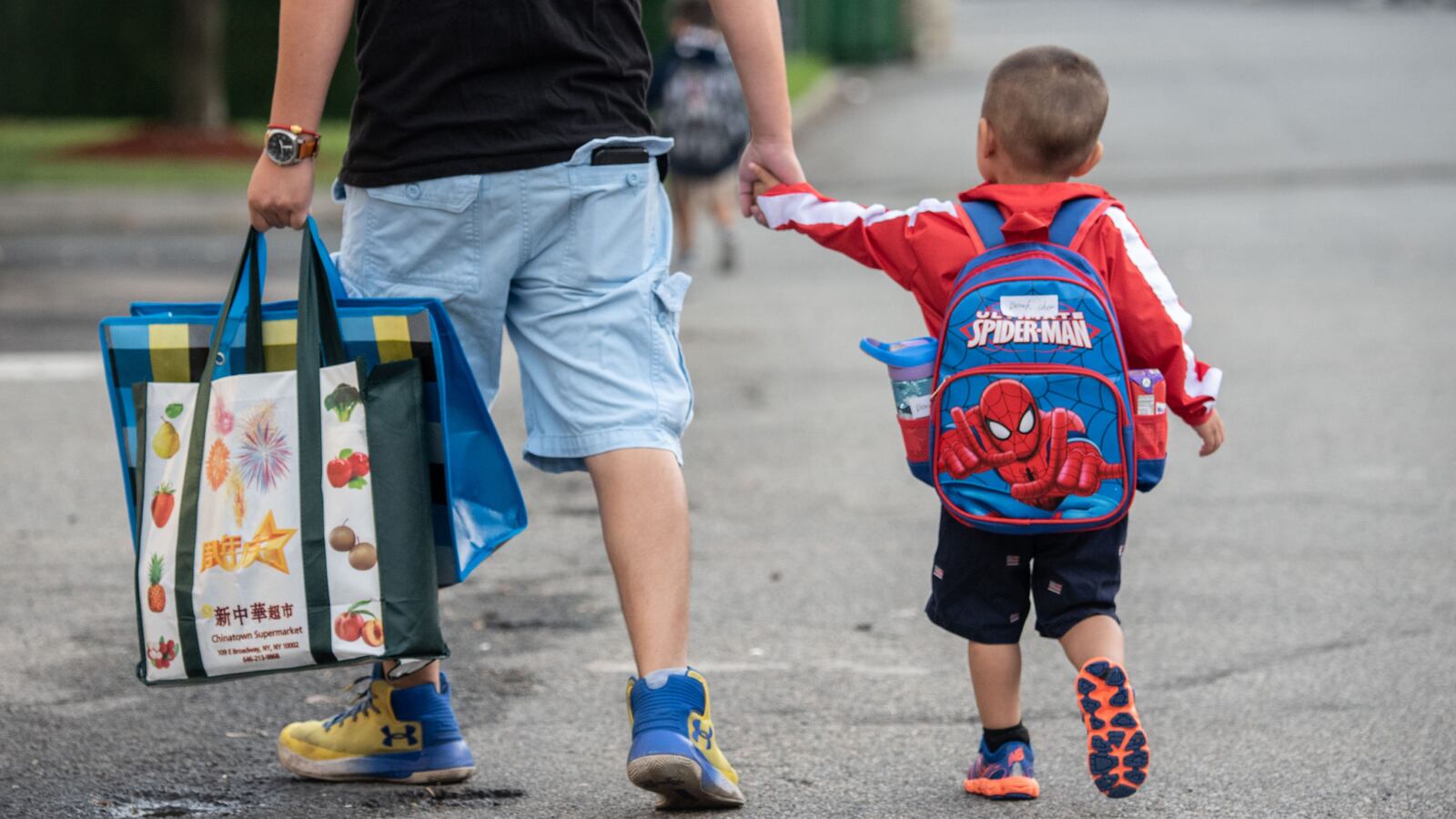Due to scant attendance, New York City is consolidating child care centers serving children of “essential” workers, Mayor Bill de Blasio said Friday.
Twenty-three of the 93 centers will be shuttered as of Monday, and families will be assigned to nearby sites, the education department said.
The city quickly scaled up the centers, just a week after school buildings were shut down. They primarily served children of health care and transit workers, as well as those of first responders. Many families of these workers rely on schools for child care, and the mayor initially cited the needs of these parents to justify keeping schools open.
New York City’s 1,800 public schools were shuttered as of March 16, and the city made plans to offer child care for those needed at work during the pandemic.
About 9,000 children were signed up to attend as of Friday, far short of the city’s 40,000 seat capacity. Because of that gap, de Blasio announced Wednesday that the centers would be opened to workers in grocery stores, pharmacies, and a few other city agencies.
“We got a decent amount of interest, but nowhere near what we thought might be based on projections,” de Blasio said during a press conference Friday.
As of Monday, the centers will have the capacity to serve 31,000 students across 70 locations, according to the education department. The city may continue to close or scale-up centers based on demand, the mayor said.
Scaling back will “minimize the number of staff who have to leave their homes each day,” Katie O’ Hanlon, a spokesperson for the education department, said in a statement.
De Blasio said the city can handle fewer students with fewer staffers and suggested the consolidation could free up school nurses to help with other health care needs as the city faces an overwhelming number of coronavirus patients. The city is asking medical professionals from various city agencies, including the child care centers, to “step up and perform critical medical duties” at hospitals and clinics, according to a memo sent to some enrichment site staff.
Each center will continue to have two nurses per shift, the memo said.
The city has not released attendance at these centers, but workers across the city have reported low numbers. The decision to close some locations comes on the same day that more essential workers were invited to take advantage of these centers — suggesting the city does not expect an overwhelming large influx of students.
Some jurisdictions have launched similar efforts to provide child care, including in Seattle and Massachusetts. Los Angeles, home to the country’s second-largest school system, halted its plans to open 40 resource centers similar to those operating in New York City, citing concerns about the spread of the coronavirus.
The city’s decision to close a site in Staten Island angered some elected officials, who said parents learned as they dropped off their children Friday morning that the center at PS/IS 861 will close Monday.
“During a time when New York City is relying on first responders and other frontline workers to help us battle coronavirus, it is unfathomable that the city would close one of the main child care facilities in Staten Island for these families,” City Council Speaker Corey Johnson, Council Member Debi Rose, Staten Island Borough President James Oddo, and Public Advocate Jumaane Williams said in a joint statement.
As of Monday, there will be three child care centers in Staten Island, 11 in Manhattan, 16 in the Bronx, 18 in Queens, and 22 in Brooklyn.
The education department said it was notifying families of the closures and was working to place children at new sites on Friday and through the weekend, said O’ Hanlon.
Advocates have called on the city to offer care to a broader range of students, especially those who are experiencing homelessness, and continued to do so Friday.
“We continue to urge the city to deliver on its promise to support ‘our most vulnerable student populations’ during this difficult time by offering the empty REC seats to students who are homeless who need a safe learning environment,” said Randi Levine, policy director for Advocates for Children New York, in a statement.
Nate Stripp is a volunteer teacher at a center set up at the Dock Street School for STEAM Studies in the Dumbo section of Brooklyn. Between Monday and Thursday, attendance there ranged from three and eight children.
With all the space in the building, Stripp wonders why the centers have not been opened to students who are homeless.
“I’m deeply worried about those kids and do not think that we as a city are currently doing enough to serve them,” Stripp said.
Moni Woweries, who works at an enrichment center in Washington Heights, said her site has seen only a handful of students each day, though she’s glad it’s not full.
“It makes us feel safer that we’re not somewhere that’s chaotic,” she said, especially since maintaining distance between small children can be a challenge.
Still, she thinks the centers should be able to serve more families who may struggle to find child care or for students in temporary housing.
“There’s space, there’s staff — I think it’s ready to go bigger,” she said.

